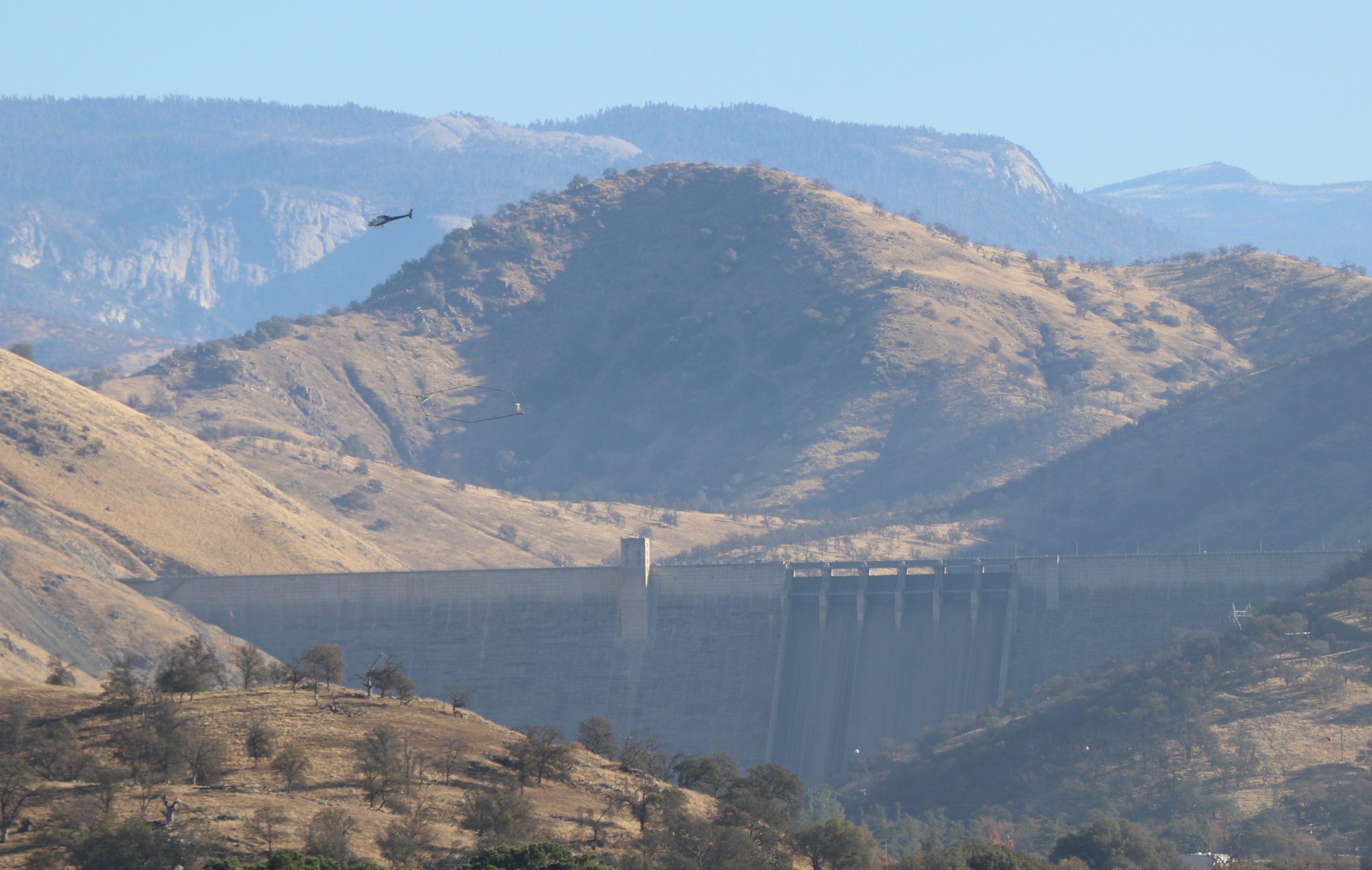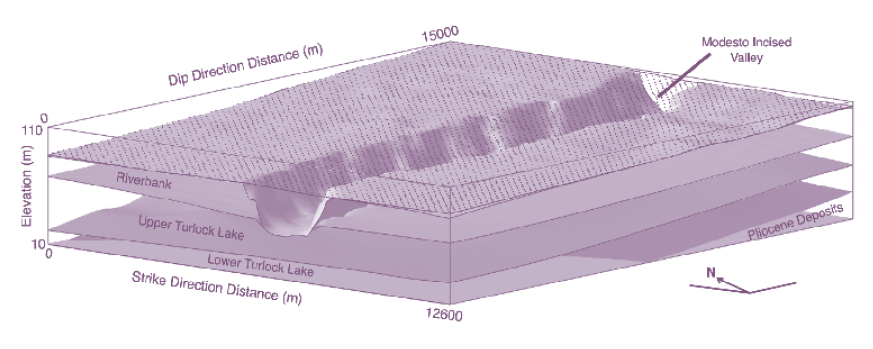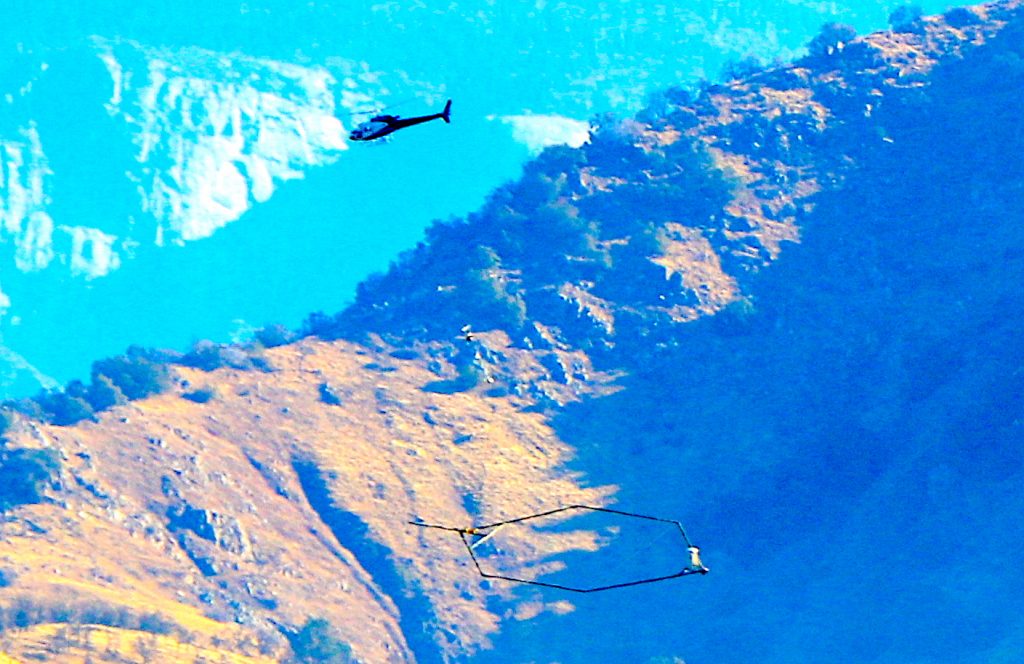
By the time California finally began regulating groundwater use in 2014, most of the San Joaquin Valley was in critical overdraft. The Public Policy Institute of California estimates that groundwater pumping in the region has exceeded replenishment by an average of 1.8 million acre-feet per year over the last few decades. This imbalance was even worse during our last drought, when overuse shot up to 2.4 million acre-feet per year.
Overpumping puts groundwater aquifers at risk of compaction, permanently reducing their water storage capacity and making surface lands sink. Now, however, San Joaquin Valley groundwater managers must find and implement a fix. The state’s Sustainable Groundwater Management Act mandates balancing the region’s pumping with replenishment by 2040.
Managed aquifer recharge — diverting excess flood water so it can soak into the ground — is an obvious remedy. But accelerating recharge in the San Joaquin Valley is easier said than done. “Recharge is slow in silt and clay, and these are ubiquitous across the Central Valley,” explains Graham Fogg, an emeritus hydrogeologist at UC Davis.
Fogg and colleagues have found a new way to speed recharge in the Central Valley: ancient river channels where water can shoot underground. The channels are called paleo valleys because they formed 16,000 years ago, during the last ice age when an expanse of alpine glaciers capped the Sierra Nevada. “As the ice melted, glacial streams were flowing hard year-round,” Fogg says. This rush of water cut deep, wide channels across Central Valley flats on its way the ocean.
As the glaciers melted away, these channels filled up with sediment. “Paleo valleys are 80 to 90 percent sand and gravel that’s extraordinarily coarse,” Fogg says. These ancient channels are also enormous at about a mile across and 100 feet deep. All this makes them ideal for groundwater recharge. He estimates that water soaks into them 60 times faster than into the fine silt and clay that pervade the Central Valley. Using paleo valleys for recharge would also be relatively cheap. “It would be orders of magnitude less expensive than building and maintaining more dams,” Fogg says.

So why aren’t we already taking advantage of these marvels of natural infrastructure? We don’t know precisely where the paleo valleys are because the land has changed dramatically. When these channels were first cut, so much of the world’s water was still in glaciers that sea level was about 400 feet lower than it is today. That meant the Sacramento-San Joaquin River Delta was much lower too, so the rivers draining the Sierra Nevada cut far into the land. Over the millennia since then, ice melt refilled the seas and sediment built up the land. Today, California’s paleo valleys are buried.
Some are just a few feet below the surface, though, and these are the channels best suited for recharge. In the early 2000s, Fogg and then-student Gary Weissmann discovered a paleo valley near the surface on the Kings River in Fresno County. “We said, ‘These features have huge potential for recharge — we should find the rest of them,’” Fogg recalls.
It’s been 20 years and little progress has been made since then. This is partly because finding paleo valleys has been difficult. So Fogg and colleagues decided to try a new way of finding these ancient river channels. Late last year, Fogg teamed up with Rosemary Knight, a Stanford geophysicist, and her research group in a pilot study with an underground imaging technique called airborne electromagnetics. Knight has used this technique over the past five years to map inland groundwater basins as well as saltwater intrusion into coastal aquifers.

Airborne electromagnetics entails flying low to the ground in a helicopter towing a transmitter loop about 60 feet across. “An electric current goes through the loop, which sets up a magnetic field that penetrates the ground surface,” Knight explains. This magnetic field generates underground currents that vary with the electrical resistance of the various materials they encounter underground. Resistance is highest in the coarse gravel and sand that fill paleo valleys, and lowest in the fine clay that impedes groundwater recharge. These underground currents then generate their own magnetic fields, which are measured by a receiver mounted on the loop. This gives researchers a picture of what’s underground to a depth of about 1,000 feet.
To see if airborne electromagnetics can spot paleo valleys, the researchers flew a helicopter along the Sierra Nevada foothills in Tulare and Fresno counties. This region includes the paleo valley discovered via borehole data two decades ago, and the big question was whether the team could find it with airborne electromagnetics, too.
The land above this paleo valley doesn’t look special to the naked eye. But airborne electromagnetics confirmed that it’s special underground. “We found the paleo valley — it’s super exciting!” Knight exclaims, leaning forward and smiling with delight. “It’s a massive coarse-grained feature extending out into the valley.” She calls paleo valleys “fastpaths” for delivering Sierra Nevada snowmelt to Central Valley aquifers.
The next step is finding more paleo valleys along the Sierra foothills and Central Valley floor, and Knight is confident that airborne electromagnetics is the way to go. “It’s such a stunning signature,” she says. Fogg agrees, saying the technique is “probably a perfect way to find paleo valleys.”
This pilot project is welcome news for groundwater managers in the San Joaquin Valley. “Everybody knows we have to do more recharge but we don’t know where to do it to maximize rates,” says project collaborator Kassy Chauhan, a civil engineer who leads the North Kings Groundwater Sustainability Agency in Fresno County. “This proves we can figure out where those prime locations are.”
Top photo: A helicopter, towing the airborne electromagnetic system while acquiring data, flies near Pine Flat Dam outside of Fresno, California. Photo: Rebecca Quist